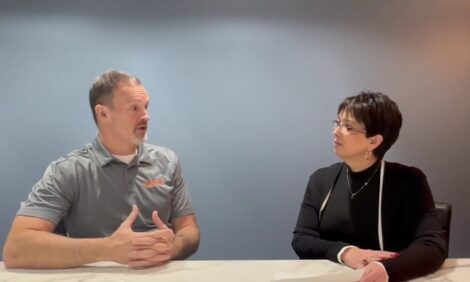



Encoding Expert Knowledge for Food Processing Technologies
Although plants are increasingly automated in the food processing industry, there remain many manual operations that require expert knowledge to function efficiently and cost-effectively, writes Dr Ai-Ping Hu for 'Poultry Tech'.As previously reported [click here], the goal of this project is to encode this knowledge so it may be effectively taught to a robot.
Researchers are considering bird re-hang as an initial expert knowledge problem. In the re-hang task, the worker grasps the bird by the breast (usually from an unstructured pile), lifts it, and then 'flicks' the bird such that its legs are each directed into a pair of moving shackles.
A motion capture system is needed to quantify the kinematics and dynamics of the manual operation.
The project team at Georgia Tech Research Institute has implemented a motion capture capability using the Microsoft Kinect (to obtain both kinematic and dynamics data). The Kinect is a sensor that is highly capable in tracking human motion. Its widespread use in the consumer gaming industry has resulted in a low-cost device that has gained popularity in other creative applications.

The graphs above show the Kinect output during tracking of the angle of an operator's hand during re-hang, for three types of motion: smooth, flick (where the bird was abruptly 'flicked' to get the legs in the shackle), and stiff (where the wrist was kept straight). The red circles in the graph track the wrist, and the blue circles track the fingertips — the overall motion evolves upward and to the left, where a shackle was located.
The results demonstrate that it is possible to discern distinguishing characteristics in the motions, shown by the differences in the hand angles. It is expected that an experienced, more efficient operator (an 'expert') would exhibit different motions from a novice.
A 'cause-and-effect' characterisation is next required to map the operator's intent to the manipulated object's resultant reaction.
In the context of bird re-hang, this input-output mapping is obtained by correlating the Kinect measurements taken from manual task motions (cause) with the bird's response relative to the shackle (effect). The project team is studying this mapping.
February 2013








